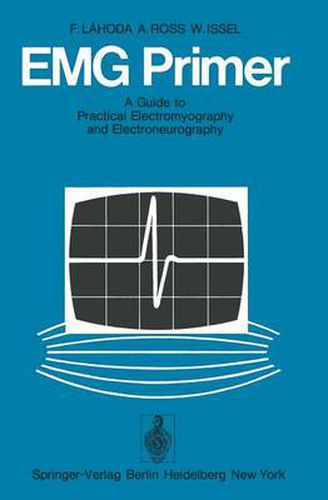Readings Newsletter
Become a Readings Member to make your shopping experience even easier.
Sign in or sign up for free!
You’re not far away from qualifying for FREE standard shipping within Australia
You’ve qualified for FREE standard shipping within Australia
The cart is loading…






This title is printed to order. This book may have been self-published. If so, we cannot guarantee the quality of the content. In the main most books will have gone through the editing process however some may not. We therefore suggest that you be aware of this before ordering this book. If in doubt check either the author or publisher’s details as we are unable to accept any returns unless they are faulty. Please contact us if you have any questions.
In the last twenty years electromyography and electro neurography have earned a secure position amongst methods of electrophysiological investigation; indeed, it is no longer possible to think of neurological diagnosis with out them. In particular, it is in the early recognition of peri pheral neuromuscular disorders that these techniques are so dependable and objective. The present text may be thought of as an introduction to method and to diagnostic application, and it should be of value to the physician both in hospital and in his practice. The authors have thought it best to omit discussion of basic scientific problems, which may be found in the neurophysiological literature. Munich, Spring 1974 A. Schrader v Contents 1. 1 Anatomical Foundations … … … … … … … … . 1 1. 1. 1. The Motor Unit… … … … … … … . . 1 1. 1. 2. Structure of the Peripheral Nerve … … . 1 1. 1. 3. The Neuromuscular Junction … … … … … 1 1. 2 Electrophysiological Foundations … … … … … … 2 1. 2. 1. Origin of Muscle Action Potentials… … … … 2 1. 2. 2. Conduction in the Peripheral Nerve… … … … 3 1. 2. 2. 1. Stimulation: Basic Considerations… … … … . 3 1. 2. 2. 2. Form, Duration and Amplitude of Action Potentials… 4 a) Evoked Muscle Action Potentials … … … . . 4 b) Nerve and Sensory Action Potentials… … … 4 c) Reflex Potentials … … … … … … . . 5 2. 1. Technical Foundations … … … … … … … … . . 5 2. 1. 1. Structure and Function of the Machine… … … . 6 2. 1. 1. 1. The Structure of an Electromyograph… … … . 6 2. 1. 1. 2. The EMG Amplifier… … … … … … . . 7 2. 1. 1. 3. Supplementary Measuring Methods in Electrom- graphy … … … … … … … … … . .
$9.00 standard shipping within Australia
FREE standard shipping within Australia for orders over $100.00
Express & International shipping calculated at checkout
This title is printed to order. This book may have been self-published. If so, we cannot guarantee the quality of the content. In the main most books will have gone through the editing process however some may not. We therefore suggest that you be aware of this before ordering this book. If in doubt check either the author or publisher’s details as we are unable to accept any returns unless they are faulty. Please contact us if you have any questions.
In the last twenty years electromyography and electro neurography have earned a secure position amongst methods of electrophysiological investigation; indeed, it is no longer possible to think of neurological diagnosis with out them. In particular, it is in the early recognition of peri pheral neuromuscular disorders that these techniques are so dependable and objective. The present text may be thought of as an introduction to method and to diagnostic application, and it should be of value to the physician both in hospital and in his practice. The authors have thought it best to omit discussion of basic scientific problems, which may be found in the neurophysiological literature. Munich, Spring 1974 A. Schrader v Contents 1. 1 Anatomical Foundations … … … … … … … … . 1 1. 1. 1. The Motor Unit… … … … … … … . . 1 1. 1. 2. Structure of the Peripheral Nerve … … . 1 1. 1. 3. The Neuromuscular Junction … … … … … 1 1. 2 Electrophysiological Foundations … … … … … … 2 1. 2. 1. Origin of Muscle Action Potentials… … … … 2 1. 2. 2. Conduction in the Peripheral Nerve… … … … 3 1. 2. 2. 1. Stimulation: Basic Considerations… … … … . 3 1. 2. 2. 2. Form, Duration and Amplitude of Action Potentials… 4 a) Evoked Muscle Action Potentials … … … . . 4 b) Nerve and Sensory Action Potentials… … … 4 c) Reflex Potentials … … … … … … . . 5 2. 1. Technical Foundations … … … … … … … … . . 5 2. 1. 1. Structure and Function of the Machine… … … . 6 2. 1. 1. 1. The Structure of an Electromyograph… … … . 6 2. 1. 1. 2. The EMG Amplifier… … … … … … . . 7 2. 1. 1. 3. Supplementary Measuring Methods in Electrom- graphy … … … … … … … … … . .